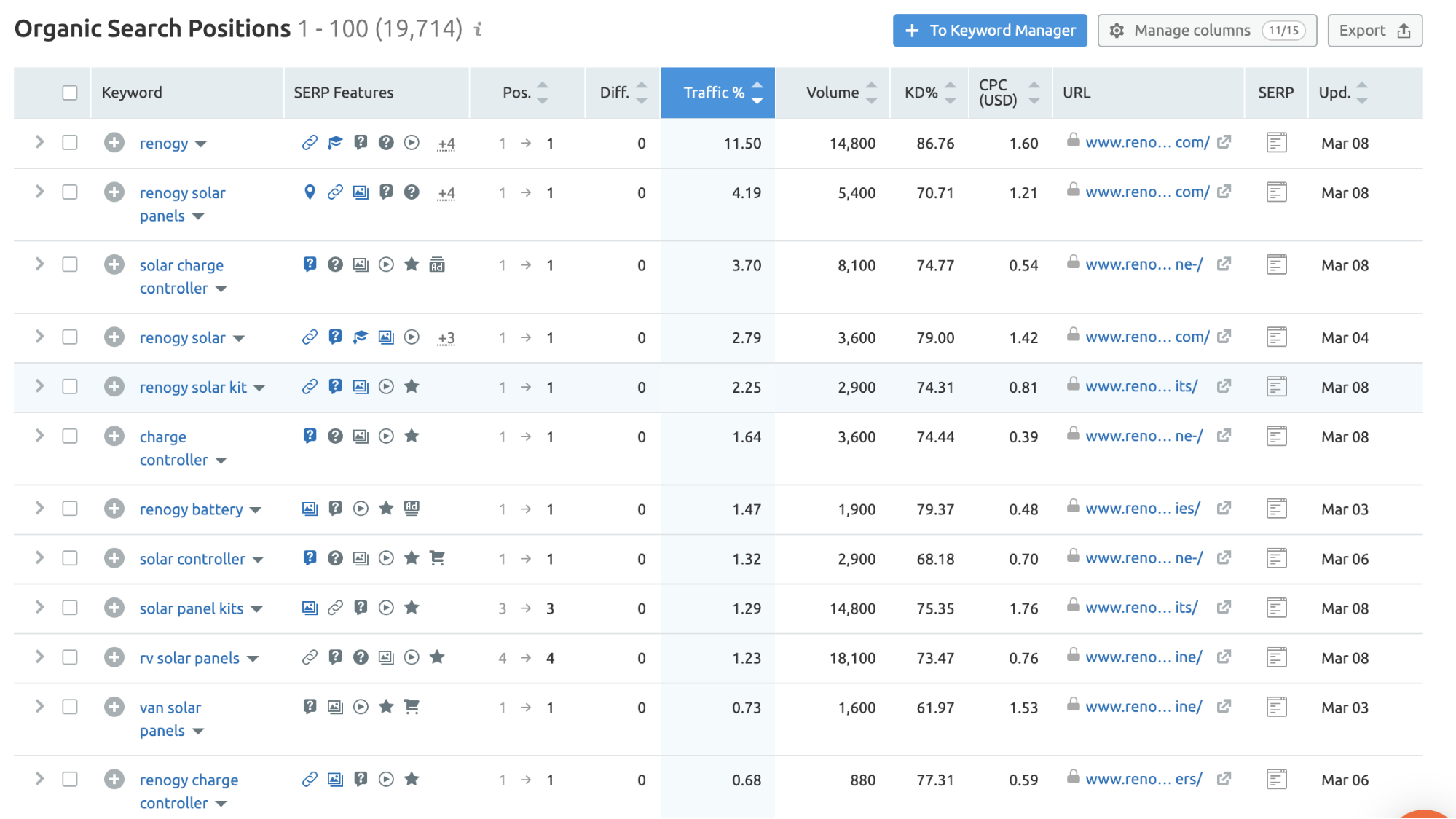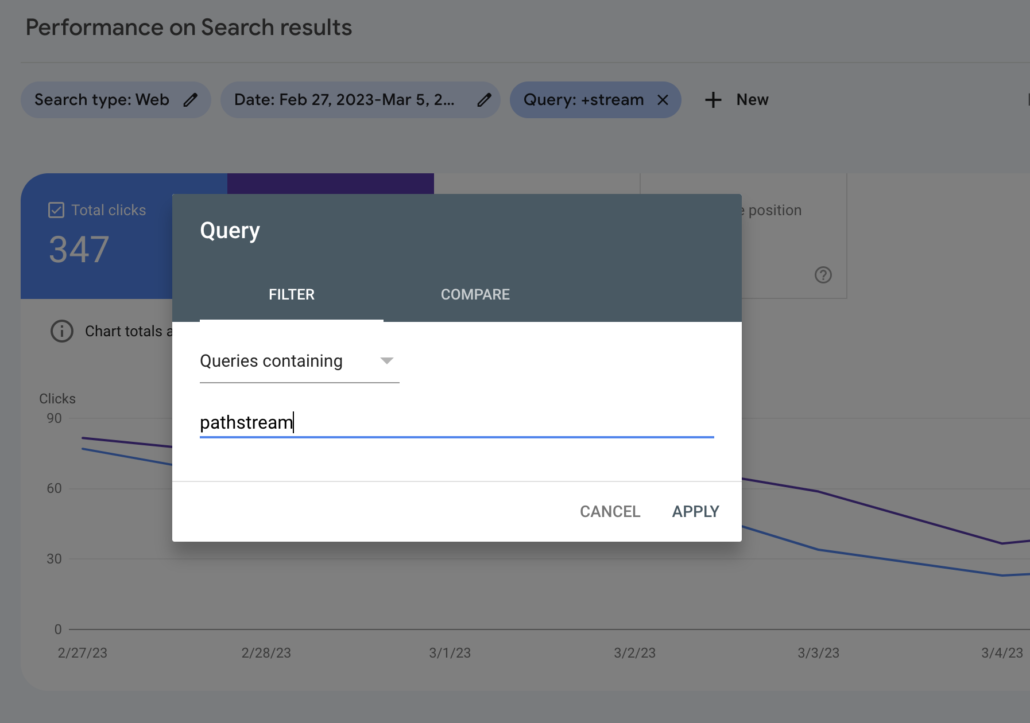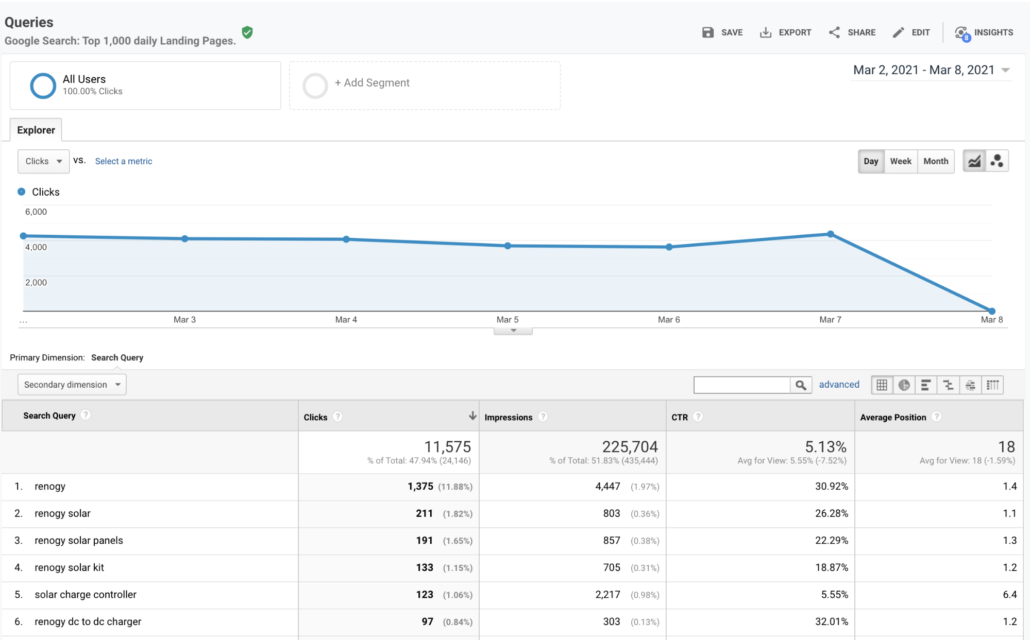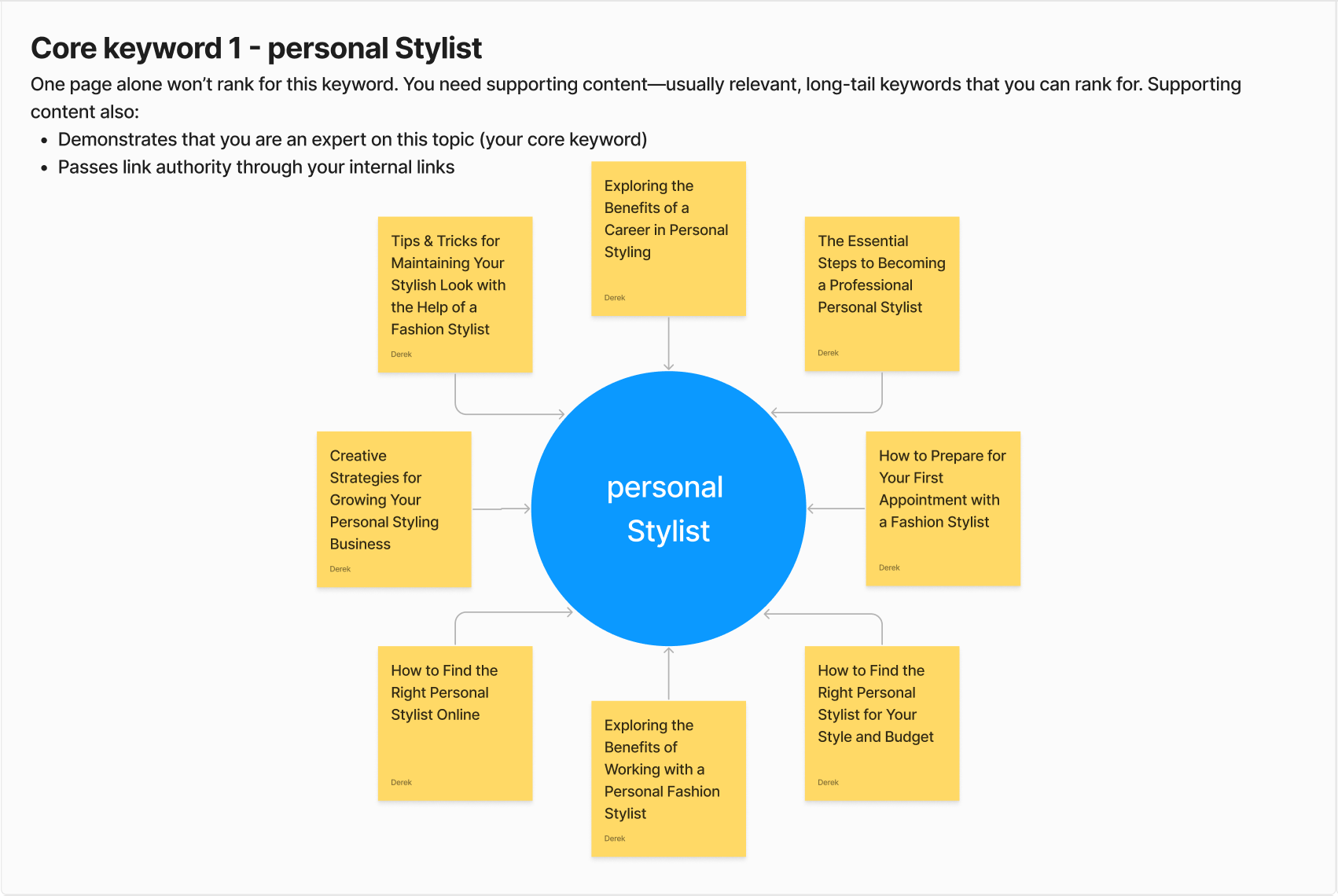Branded and Non-Branded Organic Traffic: What Is It and Why It’s Important to Track It
Author’s Note: This post was updated on March 8, 2023, with new information, links, and data.
When it comes to SEO (search engine optimization), it’s important to be able to track branded and non-branded organic traffic. So what is branded and non-branded organic traffic, why are they important, and how do you measure them? Let’s get into it.
Simply put, branded organic traffic is any organic traffic that comes from a keyword phrase that contains a branded term.
For example, QuietKat is a well-known eBike company so they receive a lot of branded searches, but not everyone spells their brand name correctly – or spells out the full name. Some examples of the branded searches that they receive are:
- quietkat bike
- quiet cat bike
- qk electric bike
What is non-branded organic traffic?
Non-branded organic traffic is the organic traffic you get from SERPs that does not explicitly mention your company’s brand name. This type of organic traffic comes from keywords that are related to the services and products that your company offers (or at least it should be) but do not include the company name or brand name.
Non-branded organic traffic is important because it means that new visitors are finding your website through searches for related products and services
Why is tracking branded and non-branded traffic Important?
It’s important to accurately track branded and non-branded organic traffic because it gives you a sense of how well your content and technical SEO are performing and what outside factors are having an effect on it.
After all, the goal of technical SEO and SEO content is to improve search rankings and increase organic traffic – not just to gain traction with people already looking for your brand.
There are a lot of factors that lead to an increase or decrease in organic traffic and by tracking branded and non-branded keyword movements you’ll be better able to accurately pinpoint what the cause is. Let’s look at a few scenarios:
- You just hired a PR agency a few months ago and are seeing a 30% increase in organic traffic MoM (month over month). Is this increase due to the PR agency’s efforts, your SEO content strategy, or both?
- Your brand reputation took a hit on social media. Organic traffic is steady but conversion rate is dropping. Could it be that non-branded organic traffic is still performing well but branded organic CVR (conversion rate) is decreasing?
- Your industry as a whole is growing exponentially and your company is reaping the benefits of this as organic traffic is up 60% MoM. Did your keyword rankings improve or did they stay the same but the monthly volume for those keywords has increased?
These are just a few reasons why it’s important to track everything you can about your organic traffic and keyword rankings.
How to track branded and non-branded organic traffic
So now you know why tracking organic keyword movement is important, but how do you track your keywords? There are a few different ways to do so. Let’s discuss the options.
SEMrush
SEMrush is probably the easiest way to track branded and non-branded organic traffic, along with other keyword movements. It’s one of the most well-known SEO tools so it’s no surprise that it’s the most common option.
With SEMrush, there is no math involved because not only do they calculate branded and non-branded traffic for you, they even plot it on a timeline so that you can see the historic performance as well.
There are a few caveats with SEMrush’s calculations and you should not completely take this at face value. I suggest taking a look at the keyword rankings and doing some quick math in your head to see if the percentage of organic traffic matches with these calculations. Sometimes SEMrush doesn’t count certain words that are misspelled or contain a space in the brand name, etc.,
By looking at the keyword rankings, you can filter the keywords by branded and non-branded keywords and focus on the Traffic % column.
Google Analytics & Google Search Console
The second way to track branded and non-branded organic traffic and sales is to use Google Analytics and Google Search Console.
Here are a few advantages to tracking branded and non-branded traffic using Google search console:
- GSC places an actual tag on your website; therefore, it’s more accurate than SEMrush’s projections based on keyword rankings.
- You can connect it to Google Analytics and view organic traffic alongside conversion data, as well as other on-page metrics that GA tracks.
- People are generally much more familiar with GA than SEMrush and have more experience working with the data.
Similar to SEMrush, GSC allows you to filter out certain keywords so that they don’t show up in your report. Unlike SEMrush though, GSC only allows you to filter out one phrase so if you have a lot of people misspelling your brand name then you’ll want to manually filter that out in Google Sheets.
In order to track organic keywords in Google Analytics, you’ll want to make sure that Google Search Console is connected to Google Analytics. This takes just a minute and will be worth it in the long run. It’s important that you do this asap because Google only starts tracking data from the date when you connected to two platforms.
From here, we can export this information to a spreadsheet and calculate the percentage of organic traffic from branded and non-branded keywords.
How to integrate branded and non-branded keywords into your SEO strategy
When building an SEO content strategy, you want to decide whether you’re going to focus on branded or non-branded keywords. In my opinion, it’s best to focus primarily on increasing organic traffic from non-branded keywords. Simply put, you want to get your content and website in front of new customers and there are better ways to increase branded traffic – specifically PR, organic social media marketing, and paid media.
So for the sake of this explanation, I’m going to focus on how to increase non-branded traffic.
How to improve non-branded traffic
This section requires a whole e-book in and of itself, which is why we wrote one here! So I’ll just touch upon the basics in this post.
Now that you know how to track branded and non-branded traffic and keywords, you’ll need to put together a list of non-branded keywords and topics that you want to target.
Building a content strategy
When choosing topics and keywords I would use the following process.
- Initially, you want to decide on 5-10 focus keywords and topics that your content is going to revolve around. These focus topics should essentially be what your business revolves around and what you will create your landing pages on – if you don’t already have them. This is a process to follow for each one of your focus keywords.
- Research the keyword in SEMrush, check the monthly search volume and KW difficulty, and add the keyword to the Keyword Manager tool if it seems like a good keyword so far.
- Check search intent in Google and see what is ranking in the top 10. This is the easiest way to decide what type of content to create for a particular keyword or topic. Is it mainly blog posts, landing pages, guides, tutorials, etc.,? This will give you a sense of what type of content search engine results pages (SERPs) prefer on this topic.
- Go back to SEMrush and plug the keyword into Keyword Magic or use SurferSEO’s Content Planner to find 5-10 related keyword phrases on the same topic.
- Once you have a list of 5-10 keywords, plug them into SEMrush and add them to Keyword Manager. Ideally, you want a keyword that has several hundred monthly searches and a KW difficulty of below 50 – but this varies greatly depending on your existing domain authority and content inventory.
- Once you’ve got your list of 5-10 keywords revolving around the same topic, build your content cluster strategy and plug each keyword into SurferSEO’s Content Editor to see what should be included in each piece of content.
- If you’re a visual learner, you can create a Figma file with your content topics and see how they relate to your focus keywords.
Key Takeaways
Whether you’re a growth marketing agency or a brand, it’s essential to understand and measure the difference in traffic, sales, and CVR between branded and non-branded traffic. Branded queries allow you to measure brand recognition, while non-branded queries give you deeper insight into keyword performance. If you’re running PPC campaigns alongside your organic efforts then you probably know how important it is to track branded and non-branded keywords and the different ROAS you get from certain keywords.
Branded vs non-branded organic traffic and sales reports can be a game-changer when reporting on your SEO performance.
Are you tracking your branded and non-branded organic traffic? What are some trends you’ve noticed? Let us know!

Derek is a digital marketer based in Boston, Massachusetts with almost a decade of hands-on SEO experience. He finds it meaningful, challenging, and exciting to develop, test, and implement new SEO strategies. When he’s not auditing websites and optimizing content he’s usually backpacking and exploring new cultures.











